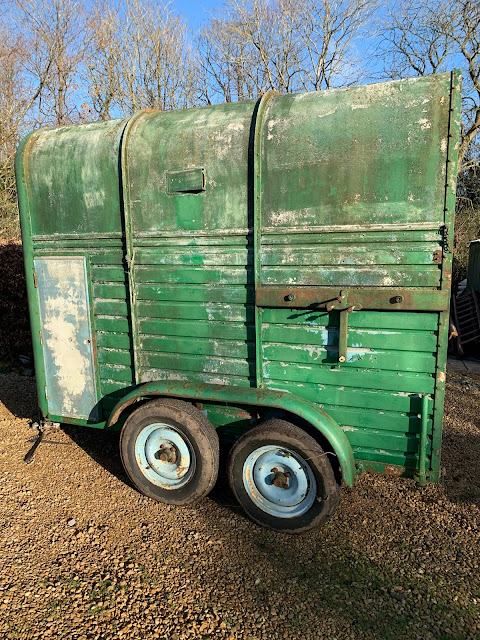Gardening without digging and weeding sounds a bit unlikely. A bit like smoking without inhaling, you wonder what else there is? But with a little planning you can make your gardening life easier, avoiding that back breaking digging and tedious weeding. I'm all in favour of spending less garden time digging and weeding and more in the deck chair. If I had a deck chair that is.
We use enough garlic around here to keep Christopher Lee cowering in a corner, so really, I should plant it in late Autumn. More or less as soon as you've gathered one year's crop, you can decide which cloves will make good seed garlic for next year, and get them in as soon as you have a spare space. Always pick the fattest cloves for replanting, and with a mixture of natural selection and gardener's selection, you will improve your seed stock year on year, eventually producing almost your own variety, perfectly suited to your own soil and your particular climate. You can do this with many crops of course, provided you don't use modern F1 hybrid seeds, which don't breed true, but with garlic it's particularly easy because the bit you eat also happens to be the bit you plant.
For such a mediterranean crop you'd think they would suffer in the average freezing cold wet English winter, but not a bit of it. They sit there in the ground all winter, putting down good roots, and then in the spring they happily shoot up, apparently none the worse.
But for the last two years, I find January arriving and the garlic is still not in the ground. Oh dear. Happily last year was a very good growing year, and my crop was still excellent, - if you don't get good results make sure that weeds are not the culprit spoiling your crop. Because it's a long season crop it's very easy to plant garlic and forget it, and before you know it the bed is full of weeds which are awkward and time consuming to get out, and if you don't get them out you will drastically reduce the crop. Ask me how I know.
Anyway, before any more of my garlic found its way into winey beef casseroles or ground onto crusty bread, I thought I'd take the opportunity afforded by a day or two of watery winter sun to plant out this year's crop.
They're very quick to plant if you already have established raised beds - just select a nice weed free area, lay out the cloves in rows using a bamboo cane as a guide - mine were about 6 inches apart, and about a foot between the rows, and when you're happy with the layout just go along the rows planting them with your trowel so that the top of the clove is just covered with soil Raised beds are best because you can work from the sides, - walking on the soil at this time of year compacts and damages its structure I don't dig my established beds at all any more, adding as much organic matter as I can during the year seems to keep it in good heart, and not treading on it with my size sevens in the winter helps maintain structure and drainage. If you're starting from scratch with a new garden, you will need to get rid of the nastier perennial weeds like ground elder first, but if you're thorough this is a one time dig.
Straight rows look nicer and make weeding easier, but I've reduced this job to a minimum here as the garlic bed is the first to receive the many offerings from the lawn mower in our garden. The garlic will be growing well by the time you start cutting the grass, so use the first lawn mowings to mulch the garlic bed, making sure you cover every inch of visible earth with the mowings. The grass gradually rots down and enriches the soil, smothering weed seedlings at the same time. Keep it topped up during the year and you'll be feeding your crop, enriching your soil, and saving yourself all that tedious weeding at the same time. Oh and if it turns out to be a humdinger of a summer it will also cut down on watering needs too.
Maybe this year I'll treat myself to a deck chair.








